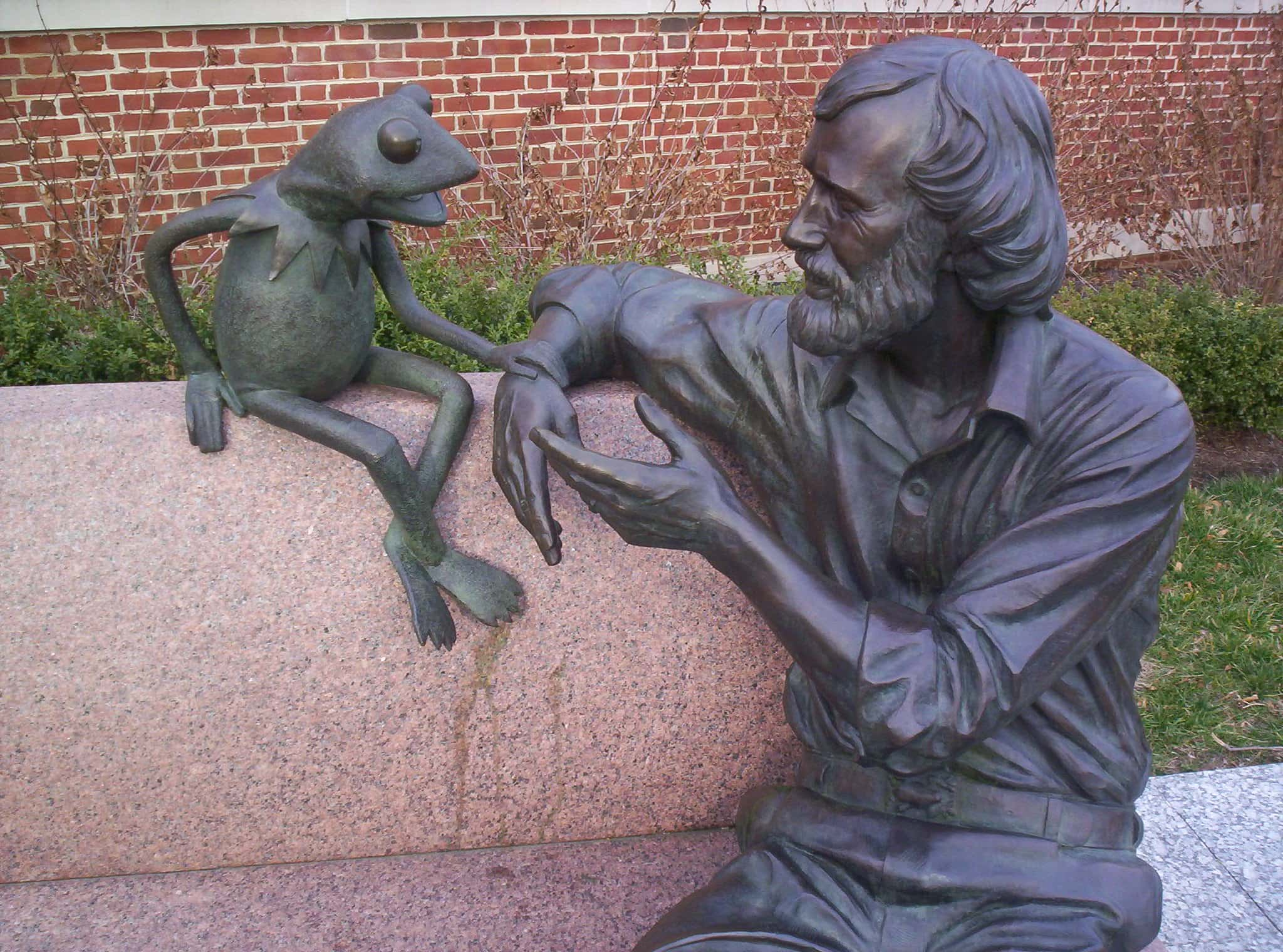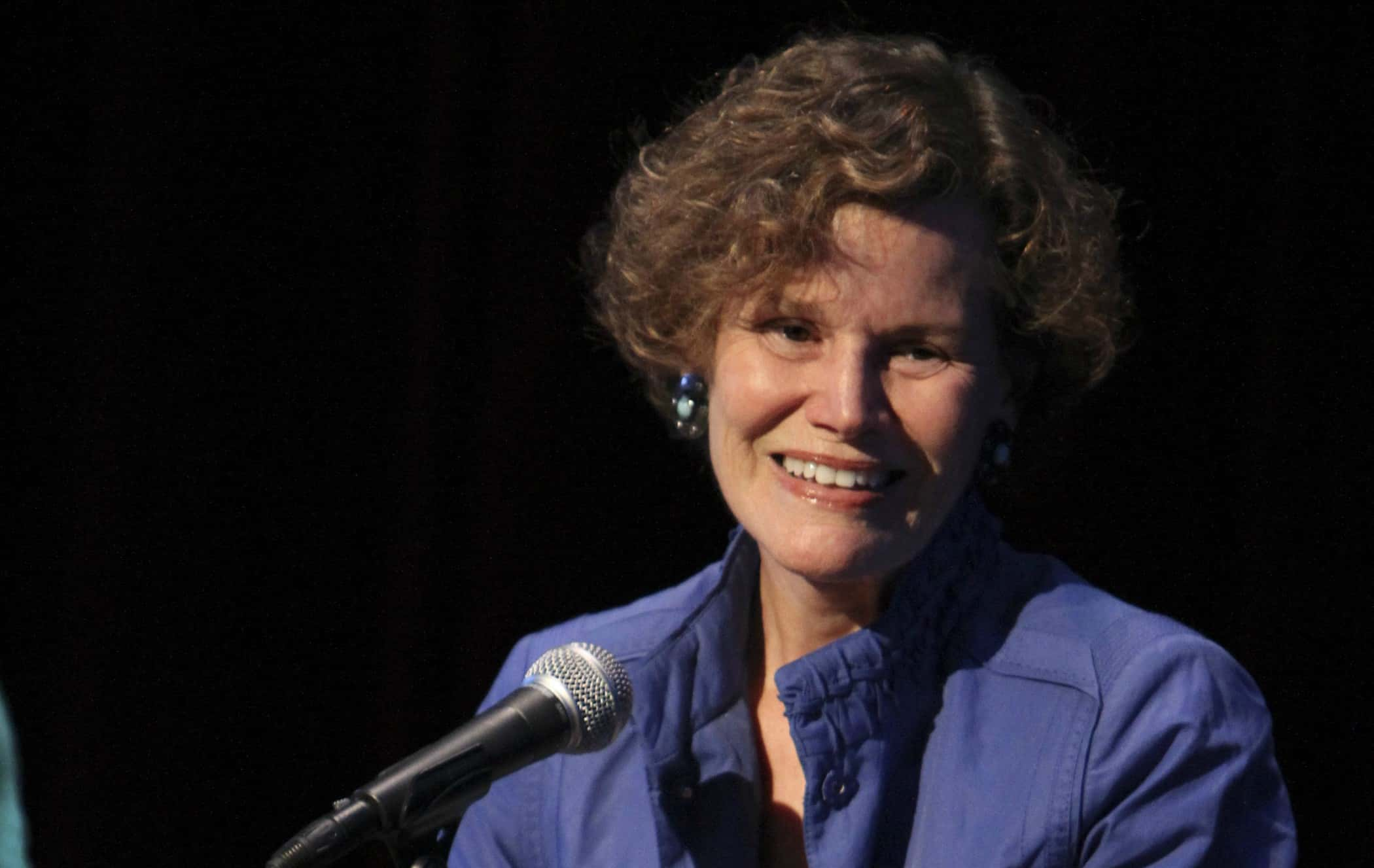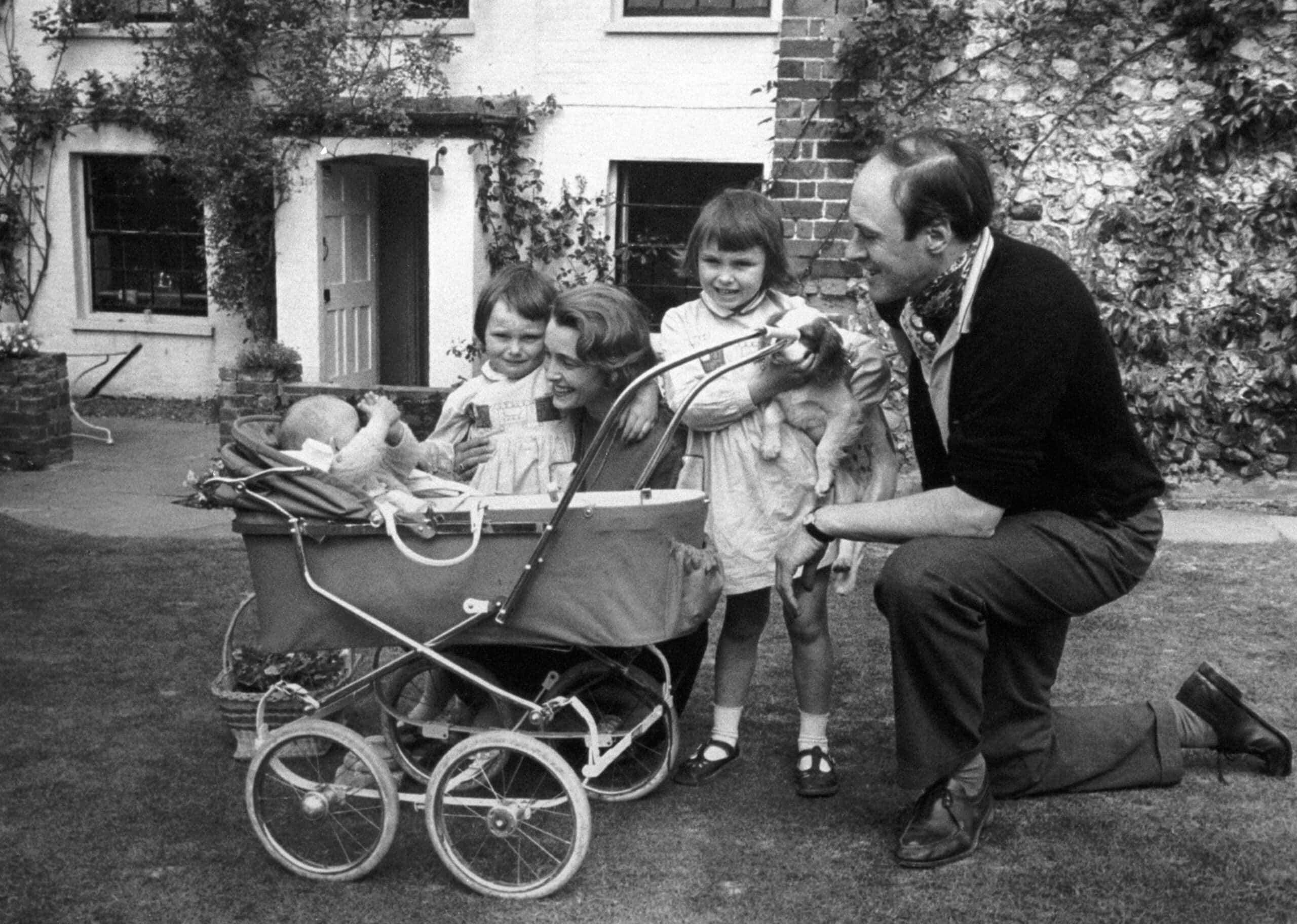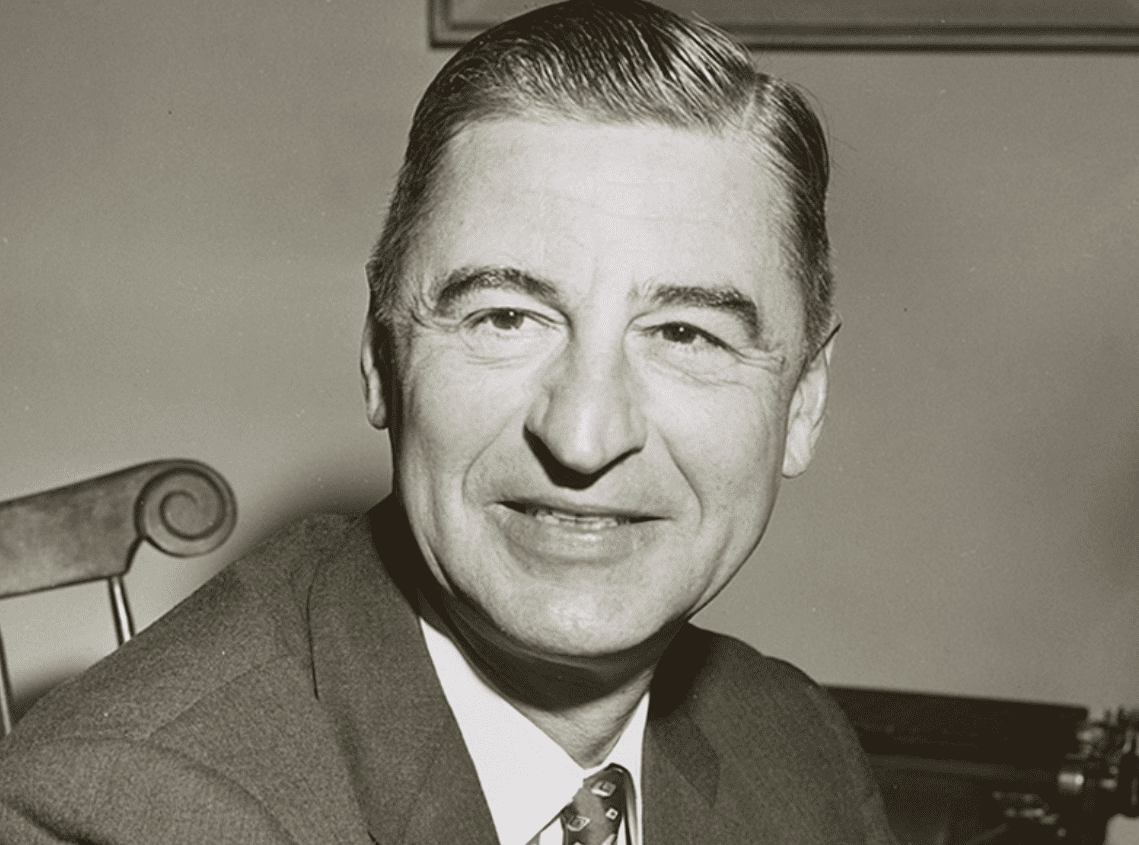Could you imagine your childhood without Mr. Rogers teaching you how to be a good neighbor, or Dr. Seuss sharing the escapades of the Cat in the Hat? Maybe you loved reading about Ramona Quimby as she navigated through her everyday problems, or watching Steve figure out what Blue’s clues were all about? But what were these icons really like? Not all of them were what they seemed to be. Let’s take a walk down memory lane to read some surprising dark facts about our favorite childhood heroes.
1. A Beautiful Day In The Neighborhood
You know kids love a show when it lasts for over 30 years. And who didn’t love Mr. Rogers? With his mild, caring demeanor, his quiet singing voice, and his signature cardigan, he did his best to make kids feel secure and cared for. In fact, the show’s focus on children’s social and emotional needs might have been a result of Mr. Rogers’ own traumatic childhood.
2. Troubled Times
The reason for Mr. Rogers’ difficult childhood: Weight and confidence issues. He was bullied at school, and at home, his asthma triggered overprotective tendencies in his mother, who kept him indoors a whole summer because of it. He dealt with his problems alone, as best as he could—but a silver lining in those troubled days was time spent with his grandfather.
3. Just The Way You Are
Apart from playing the piano and escaping to an imaginary world with his stuffed animals whenever he was troubled, Rogers loved spending time with his grandad. The older man would assure Rogers that he loved him just as he was. This became a standard refrain on the show: Rogers would end it by telling his young audience, “I like you just the way you are.”
4. It Was Destiny
There was a world where Fred Rogers never stepped in front of a camera! His plan was to join a seminary after he got his degree in music composition in 1951. The only reason he changed his mind was that his parents had recently bought a television and when he saw it at their house the content utterly appalled him. He wanted to use it to “nurture those who watch and listen.” Lucky for us he swung by his parents’ place before going to the seminary!
5. O Canada
Mr. Rogers’ Neighborhood was actually born in Canada. After he had spent a few years working behind the scenes for a show called The Children’s Corner, Rogers moved to Toronto to create and host a black-and-white, 15-minute show for CBC called Misterogers. He eventually moved back to Pittsburgh after three years and was able to start hosting Mr. Rogers’ Neighborhood a year later, on PBS.
6. Mr. Rogers Knows
What made the show such a hit with little kids and their parents? Well for starters, no problem was too big or small for Mr. Rogers’ Neighborhood. From divorce to sibling rivalry, dealing with loss or a new arrival in the family, Rogers’ emphasis was to help kids feel all their feelings. He even talked to them about Robert Kennedy’s assassination! Parents appreciated that he spoke to their kids directly and as equals.
 Wikimedia Commons, David Wilson
Wikimedia Commons, David Wilson
7. A Divine Message
The Church wanted Rogers to be on TV! Remember that seminary Mr. Rogers wanted to go to? Well, he did end up going there while he was working on The Children’s Corner. He was ordained as a Presbyterian Minister, and the Church asked him to “minister to children and their families” through his show. Rogers took this seriously, and always consulted with psychologist Margaret McFarland about the content he created for his young viewers.
8. Goodbye Neighbor
It was a sad day in the neighborhood when Mr. Rogers finally bade goodbye and filmed his final show in 2001. He wanted no fanfare or acknowledgement that this was his last show though, and there was no mention of it onscreen. Reruns of the show continued to be telecast, as well as episodes he had previously recorded. But the final goodbye was when he passed due to stomach cancer in February 2003.
9. Adult Friends
It wasn’t just kids Rogers was concerned about though—he wrote numerous books with parenting advice for grownups. He also stopped filming Mr. Rogers’ Neighborhood for four years in the 1970s and used the hiatus to dabble in adult programming. He was one of the most popular choices for Commencement speakers and presented such a strong case in front of the Senate to ask them not to cut PBS funding, that they ended up doubling it!
 Wikimedia Commons, Derek Wolfgram
Wikimedia Commons, Derek Wolfgram

History's most fascinating stories and darkest secrets, delivered to your inbox daily.
10. The Pittsburgh Factor
Mr. Rogers wasn’t the only children’s superstar born in Pittsburgh: Award-winning writer Robert Munsch was born there too. He was the fourth of nine children and was best at writing all kinds of poetry in school. No one, including him, thought much of that though, as he wasn’t academically inclined otherwise.
11. A Priestly Ambition
Munsch might never have been a writer if he’d followed his original ambition: To become a Jesuit priest. He spent seven years in the seminary training to be one, but while he was there, he would volunteer in an orphanage to “escape from deadly classes in philosophy.” Good thing he didn’t like philosophy is all I can say!
12. Daycare Adventures
Although he’d spent seven years at the seminary, Munsch still needed to take some time to figure out what he wanted to do. He decided the best place to answer such existential questions was a daycare. Turned out he made the correct decision, because while he was there it hit him: He wanted to spend his life working with children! Definitely a "right place, right time" kinda scenario.
13. Storyteller Numero Uno
At the daycares where he worked, the children came to know Munsch best for, drumroll please, telling stories! No surprise there—well, at least in retrospect. It was when he was working at a preschool in Guelph, Ontario that the kids’ librarian heard his stories and pushed him to get them published. He tried ten publishers, nine of whom weren’t interested. Thankfully, the tenth was, and there was no looking back.
14. The Way To A Kid’s Heart
Once he quit his job to write full time, Munsch became a great favorite with kids for two reasons: He would drop in, unannounced, at different schools and daycares and do impromptu storytelling sessions. Also, instead of staying a hotel when he traveled for children’s festivals, he would stay with the families of his young admirers! He claimed this was a great place to find new stories too.
15. Dearly Beloved
Munsch’s stories are about strong, independent kids who aren’t afraid to tackle their problems in wacky but imaginative ways. Many of his stories are even studied in Children’s Literature courses. While most of his books were inspired by kids he would meet and talk to in his travels, some of them sprung from a more serious—and heartbreaking—source.
16. How Long Is Forever?
The number one bestselling book by Munsch is Love you Forever and it began as a song written to help him grieve the stillbirth of his two biological children. Munsch and his wife adopted three kids after that, but the song-turned-storybook became a smash hit both in the US and Canada. This isn’t the only tough time he has gone through in his life though.
 Shutterstock
Shutterstock
17. Struggling Writer
Munsch has never hidden the fact that he was diagnosed as manic-depressive and obsessive-compulsive, and he has also been open about his problems with addiction. He emphasizes the importance of treatment and strong support from loved ones. By talking about these issues, he hopes to encourage parents to communicate honestly with kids and help them through the challenges they face.
18. The Farm Life
Would you believe that Newberry-winning author Beverly Cleary once had a hard time reading? Cleary was born on a farm in rural Yamhill, Oregon; a town that didn’t even have a library! Her mom had an arrangement with the State Library to send her some titles though, and that's how Cleary’s love for books was born.
19. School Woes
However, a love for books wasn’t enough to help Cleary in school when she moved to Portland with her family. Her pride and health both suffered when she found herself in the lowest reading group in her grade. The school librarian came to the rescue and helped her to catch up to her class. Finally, in the third grade, Cleary was reading better than ever before and hitting it out of the ballpark with her writing too.
20. What Do You Do With An Idea?
Turns out the school librarian did a lot more for Cleary than just help her read: She also planted the thought of being a writer in her mind and inspired her to become a librarian herself.
21. Kidspiration
Cleary’s biggest inspiration to become a writer: The kids she helped in the library. She realized there weren’t a lot of reading options, especially for boys. That is how Henry Huggins was born, and there was no looking back. Eventually, Huggins’ friend Beezus and her little sister, Ramona, got their own book and Ramona’s popularity ensured her a spot in many more titles.
22. Writing “Her-Story”
Cleary’s books are beloved because they touch upon universal themes. Kids can relate to her characters who may be dealing with various challenges: Their parents’ divorce, a new sibling, struggles in school, and so on. She wrote two memoirs, and all her books are international bestsellers to this day.
23. The Good Life
Cleary didn’t lead a life devoid of drama herself. Her parents vehemently opposed her marriage to her husband Clarence because he was a Roman Catholic. Unperturbed by their opposition, the couple eloped and married in 1940. They settled down in Carmel-by-the-Sea in California and had twins a few years after. Cleary fondly remembers her “exceptionally happy career,” and lives in a retirement home now at age 104.
24. It Was Destiny
When a 22-year-old actor named Steve Burns moved from Pennsylvania to New York, he was hoping to land an edgy role like Serpico. Little did he realize, he would actually end up becoming a beloved host on one of the world's most popular kids’ shows! Kids absolutely loved figuring out Blue’s plans for the day with Burns on Blues Clues.
25. He’s Got The Look (or Not)
Since Burns had obviously never planned on playing a kids' show host, his look wasn’t very kid-friendly either. His long hair, earring, and facial stubble made him look more like a “skate rat,” but since he thought he was auditioning for a voiceover role, he figured it didn’t matter. He changed his look to a cleaner, more wholesome aesthetic when the creators asked him to.
26. Kids Know Best
There was surprisingly tough competition for the role of Blue’s human friend. Producers chose Burns from over 1,000 people who auditioned. The creators had originally wanted a female host but decided to go with Burns when they realized that preschool test audiences adored him. Like Baby Bear’s porridge, he was “just right.”
27. Most Eligible Bachelor, Wha’?!
Kids ended up loving Burns as much as they loved Blue and the show became an instant success. Burns became a celebrity among preschoolers and their families, but happily for him, he also landed on People Magazine’s “100 Most Eligible Bachelors” list one year. A lot of girls started asking him out for dates then; once with most disastrous (for him) but heartwarming (for someone else) results!
28. Gate Crasher!
Burns’ most memorable date must have been the one he set up with a swimsuit model. The blonde bombshell sent him her picture and phone number, so he figured, "Why not?" and gave her a call. Unfortunately, things started going downhill from the moment she opened the door and he saw that she towered over him. Wanting to impress her by doing something out of the box, he crashed the Blue’s Clues themed birthday party of her little neighbor, complete with his signature green shirt and some toys he had in his car. The kid was delighted—the date, not really.
29. Hair Today, Gone Tomorrow
After appearing in over 100 episodes of Blue’s Clues, Burns decided to bid farewell to the show for two reasons: One, he didn’t want to limit himself to kids’ tv, and two, he was losing his hair! In fact, the first thing he did after filming the final episode of the show was shave his head. Apparently, he’d been wanting to do it for a while but had held off because the producers had asked him to.
30. All’s Well
Burns’ little fans were sad to see him go, although the show tried to make it easy for them by showing Burns as going off to college, while his "younger brother” Joe took over. However, a lot of rumors started circulating about the "true nature" of Burns' exit. Eventually, he had to go on The Rosie O’ Donnell Show to confirm that he was still alive!
31. Here And Now
While Burns dabbled in a variety of things after leaving Blue’s Clues, perhaps his best-known work after that is writing and performing “Mighty Little Man,” the theme song for CBS's Young Sheldon.
32. The “Muppeteer”
Jim Henson coined the term “muppets” when he was in college, doing a five-minute show called Sam and Friends on TV. Interestingly, Henson did not imagine his creations would ever become a career. He initially just saw it as a way to earn some money and get into commercial television. So glad it turned out the way it did. Can you imagine a world without Kermit? Or Big Bird?!
33. Always A Creative
Originally planning to major in Studio Arts, Henson ended up graduating with a Bachelor of Science in Home Economics. His grandmother had planted the seeds of creativity in him long ago when she would draw, paint, and sew with him as a child. All this helped him create his Muppets, who were much more realistic than the usual puppets audiences got to see at the time.
34. Kermit The Lizard?
We can't talk Muppets without mentioning Henson's earliest and most famous creation: Kermit the Frog. Believe it or not, Kermit actually started out as a turquoise lizard. Henson made him out of his mother’s old coat and used ping pong balls for his eyes. He later evolved into his green, endearing self, and eventually became like a part of Henson. The famous puppeteer often called Kermit his bolder, wiser alter-ego.
35. Billboard Sensation
Henson made it to the Billboard Hot 100 with Kermit’s rendition of “Rainbow Connection,” from The Muppet Movie. The song eventually came in at number 25. The “Rubber Duckie” song by Ernie on Sesame Street also made it to number 16 on the Billboard charts. No love for "Movin' Right Along"? Now that's a tragedy.
36. A Family Affair
Henson’s earliest collaborator and partner was his college friend Jane Nebel, whom he later married. She stopped working with him to raise their five kids, who started working with the Muppets as soon as they could to spend more time with their father. Although Henson and Jane split up a few years before his passing, they remained good friends until the end.
 Getty Images
Getty Images
37. Change-Maker
Television can be a great tool to influence and shape children’s minds and hearts towards the good and positive. This idea inspired Henson to create Fraggle Rock, a show that he hoped would teach kids about “peaceful conflict resolution.” He had a simple plan: Show kids how different groups of Muppets learned to coexist peacefully, so they could apply the same principles in life when they grew up.
38. Leading From The Front
Frank Oz was to Henson what Miss Piggie was to Kermit, and Bert was to Ernie. Oz joined Henson at just 19, and they worked closely until the latter’s passing. Oz says that working for Henson was such a great learning experience because of his generosity and kindness. He firmly believes they could not have created what they did if Henson had been more controlling, or averse to letting his crew make mistakes.
39. A Celebration of Life
Tragically, Henson passed at the young age of 53, when he was planning on selling the rights of his company to Disney so he could focus more on the creative side of things. However, before he was gone, he left instructions for what he wanted his funeral to look like: A celebration, with people singing, laughing, and sharing happy memories.
It happened just how he’d wished, but it still managed to pull the heartstrings—especially with Big Bird mournfully singing Kermit’s song “It’s Not Easy Being Green” to wrap it up.
40. Science Is Fun!
Bill Nye studied mechanical engineering as a young man, but discovered his love for performing when he started doing Steve Martin impressions and people loved it. He began doing stand-up at night while working for Boeing in the day, but eventually quit the latter to focus on entertaining full time.
41. Pre-Science Guy Days
Nye started out as a freelance writer/performer on a show called Almost Live. Eventually, he started performing some science experiments on the show. Unsurprisingly, these segments, coupled with his sense of humor, were quite popular with the audience. He also hosted a show called Fabulous Wetlands, which became a model for his more famous Science Guy show.
42. Popularity Rise
Bill Nye the Science Guy ran for over five years and was one of the most-watched educational shows of its time. Although Nye made the show for a younger audience, it had adult fans as well. Nye was able to make science entertaining and approachable for all kinds of viewers, and this achievement led to the show winning 19 Emmy awards.
43. Lofty Objectives
Nye took the time to type out the "rules" of Bill Nye the Science Guy and post them for all the staff to see. Rule number one was very simple: “Objective: Change the World.” Not a tall order at all, that one.
 Wikimedia Commons, Raphael Perrino
Wikimedia Commons, Raphael Perrino
44. He’s An Inventor Too!
Not content with just having a hit TV show, Nye added inventor to his list of accomplishments as well. He has invented a more comfortable ballet shoe, as well as an educational magnifying glass made out of a clear plastic bag filled with water. He also convinced NASA to include sundials on the Mars Exploration Rovers. The "Marsdial" ended up helping scientists keep track of time, as well as with color calibration.
45. Stories On Everything
Judy Blume’s books helped many kids in their transition from childhood to young adulthood. However, her openness in discussing many controversial themes came with a price, and the American Library Association has consistently named her “one of the most frequently challenged authors of the 21st century.”
46. Fighting Back
Blume has consistently advocated for intellectual freedom and has worked with the National Coalition Against Censorship (NCAC) to express her stance against banning books or any form of artistic expression. Her own books have sold over 85 million copies and have been translated into 32 languages. Clearly, her young audience values her honesty and frankness.
47. Not All Sunshine And Roses
Blume’s own life hasn’t been short of drama. She divorced her husband, John M. Blume, after 16 years, claiming the marriage was “suffocating." Well, second time's the charm, right? Nope. Her second marriage only lasted three years and, in her own words, was a “total disaster.” Unfortunately, that wasn’t the end of her tribulations.
48. To Good Health
Blume also had to undergo a hysterectomy after being diagnosed with cervical cancer, and a mastectomy after being diagnosed with breast cancer 17 years later. She recovered from both thankfully, and now lives in the Key West with her third husband, George Cooper, with whom she co-founded an independent bookstore. She loves meeting readers and “introducing them to some of (her) favorite authors.”
49. Big Influence
Blume’s influence was such that it inspired a song in her name by Amanda Palmer in 2018. Although there aren’t others who wrote songs for her, Blume’s consistent appearance in lists of bestselling authors for children and young adults proves how important her books have been in helping kids understand important subjects like puberty, divorce, eating disorders, and beyond.
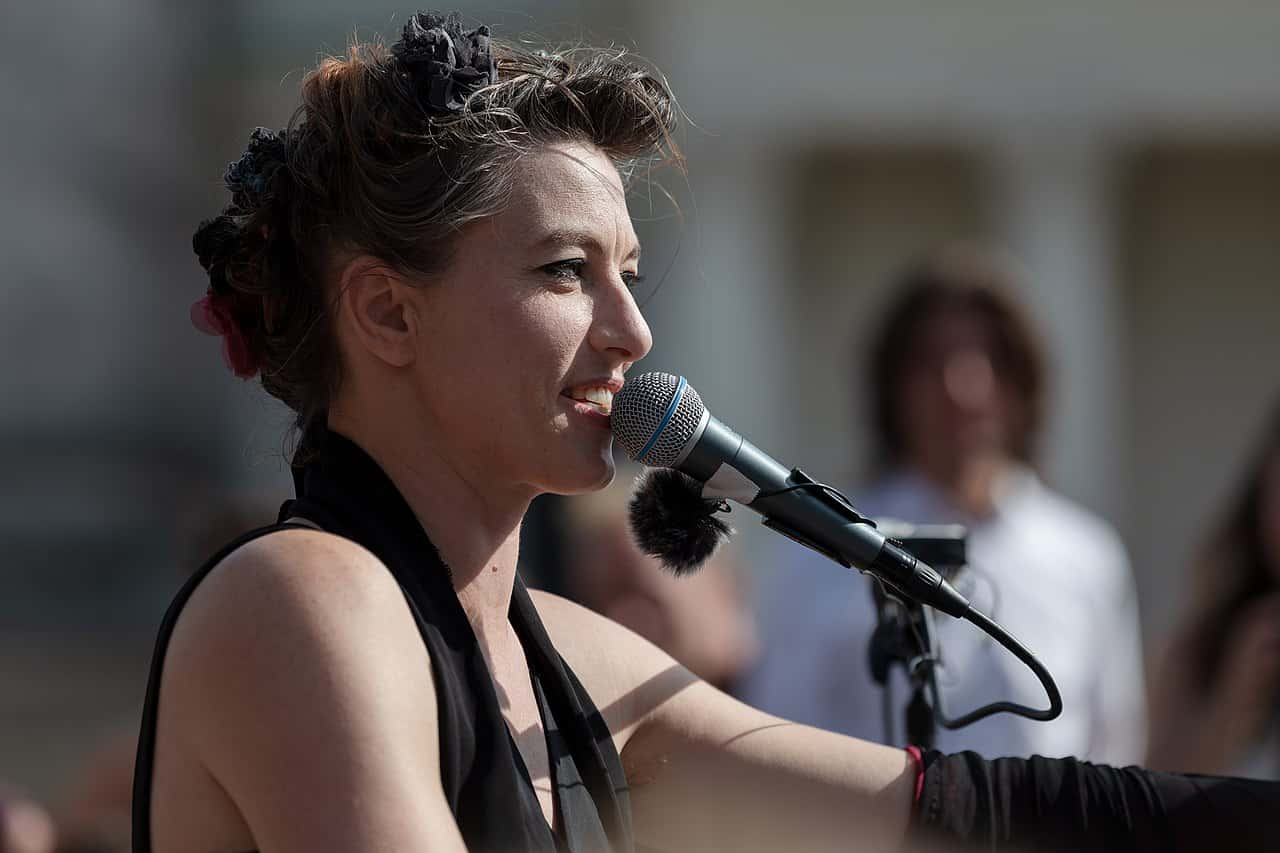 Wikimedia Commons, Manfred Werner (Tsui)
Wikimedia Commons, Manfred Werner (Tsui)
50. A Man Who Wore Many Hats
The name “Roald Dahl” immediately conjures up images of several childhood classics like The BFG and Matilda, but did you know the man was also a fighter pilot, a spy, a chocolate connoisseur, and even a medical inventor? How completely splendiferous is all we can say!
51. The Sad Beginning
Born to Norwegian parents in Cardiff, Dahl was named after the famous explorer, Roald Amundsen. His childhood was touched by tragedy when he lost his father and sister within a year. His mother sent him to public boarding schools, thinking it was the best option for him. Unfortunately, this was not the case.
52. Inspiration in Unlikely Places
Dahl may have hated boarding school, but it provided him with a lot of inspiration. The punishment-doling teachers and tormenting boys gave him a rough outline for the memorable villains in his books. He also used one pleasant aspect of his school in one of his most famous books about a boy named Charlie.
53. Chocolate Tester
The inspiration for Charlie and the Chocolate Factory: Chocolate of course! Cadbury used to send new chocolate samples to Dahl’s school so the students could taste them and give feedback. Dahl had a burning desire to create a chocolate that would impress Mr. Cadbury himself. That did not happen, but he remained a lifetime chocolate aficionado.
54. Oil Man Turned Spy!
You might have thought Dahl turned to writing after school, but his real life was much more happening. He worked for Shell Petroleum in East Africa initially, but enlisted as a fighter pilot when WWII began. Even though he suffered serious injuries after a crash landing, he was back in action after just six months. He suffered from constant headaches, but they did not deter him. He had to give up being a fighter pilot, but he settled on the next best thing: Being a spy for MI6.
55. Part-time Medical Inventor
The story behind how Dahl became involved in some medical inventions and discoveries is a heartbreaking one. His son Theo was only four months old when he got hit by a car and bashed his skull. The doctors needed to ensure that the fluid kept draining out of his brain, but the valves they were using kept getting blocked. Enter Dahl, to the rescue.
56. Problem Solving
Every problem has a solution, and Dahl wasn’t going to rest until he found one. He connected with his friends, Dr. Kenneth Till (a neurosurgeon) and Stanley Wade (a model airplane maker) and together they came up with the Wade-Dahl-Till shunt, a valve used to help children with hydrocephalus.
57. Writerly Woes
Dahl never learned how to type! He would write for four hours every day in a little shed in his garden, seated in a battered old armchair. Funnily, his writing had never been appreciated when he was in school. He sure showed those teachers, huh!
58. Muses Everywhere
Maybe it wasn’t done consciously, but Dahl’s writing drew from his real-life experiences, both the good and bad ones. His first wife, Patricia O’Neale, suffered a stroke and as she got better, she found it hard to find the right words for various things and feelings. As a result, she ended up inventing several new words. Dahl didn't actually use any of those, but she inspired him to create a ton of new words for The BFG.
59. Seuss I Am
Born Theodore Seuss Giesel to German immigrant parents, Dr. Seuss got his penname by accident…well, kind of. He was partying with his friends and a pint of the hard stuff in Dartmouth when the Dean decided to check in on them. Since this was in the time of Prohibition, Seuss found himself in hot water. The school asked him to resign as chief-editor of Dartmouth's humor magazine, Jack-o-Lantern. He did as they asked...but secretly continued working for the magazine under the handle of “Seuss,” and “T. Seuss.”
60. Not Really A Dr.
Dr. Seuss almost became a teacher with a real post-doctorate degree! He went to Oxford to study literature, but his friend Helen Palmer, who later became his wife, convinced him to focus on his art. He must have realized he’d be happier doing that because he went back to the US without finishing his doctorate and began looking for jobs in magazines and ad agencies.
61. A Dark Start?
Seuss didn’t take long to make his mark in the advertising world, but there was a dark twist to his most successful work. His ad campaign for Flit, a bug spray brand, though hugely popular, featured some pretty darn offensive stereotypes. This included African people drawn as “pitch black characters wearing grass skirts” and Asian people shown with yellow skin and lines instead of eyes. While some question Seuss’s popularity now because of his past, others argue that Seuss was a product of his times and his later work shows his evolution.
62. From Ads To Stories
Inspiration can hit anywhere, even while listening to the sound of a ship’s engines on a cruise. That is how Seuss came up with And to Think That I Saw It on Mulberry Street, his first book for kids. Transitioning from ad-man to author wasn’t that easy though: Over 27 different publishers rejected the book!
63. A Friend In Need
The fate of Seuss’s career changed forever thanks to a totally freak coincidence. After receiving his final rejection for Mulberry Street, he randomly bumped into an old friend on the road. It turned out, the friend had just started working as an editor at Vanguard Press—in the children’s section no less. Talk about destiny! The friend drew up a contract immediately, and Vanguard published Seuss’s first book. From then on, there was no looking back!
64. Politically Speaking
Seuss had already realized his strength lay in writing for children and not adults, but then WWII broke out. It suddenly became more important to him to work on political cartoons for PM, a left-leaning magazine, than to write stories. He joined the army in 1942 and became directly involved in creating army-training films, as well as award-winning documentaries such as Design for Death.
65. Helping Kids Read
Seuss went back to writing once the War ended—and this time, he wasn’t just writing to entertain kids; he was teaching them to read! After identifying around 250 words that all first graders should essentially recognize, Seuss wrote The Cat in the Hat using 236 of them. The book was a huge success and ushered in a new era for Seuss’s literary exploits. He wrote several “Beginner Books” which remain bestsellers to this day.
66. Personal Problems
All was not bright and wholesome in the Seuss household though. The first brush with tragedy came when his first wife, Helen, took her own life. She had been depressed because she suffered from partial paralysis, and suspected her husband was having an affair with her friend, Audrey Dimond. Since Seuss married Dimond less than a year after her passing, it's hard to say she wasn't on to something...
67. Kid Friendly?
For someone so in tune with what appealed to kids, it should be sad that Seuss never had any of his own—that is, it would be if he hadn’t claimed himself that children made him uncomfortable. When people asked him how he could write for kids without having any, his standard response would be: “You make 'em, I’ll amuse 'em.”
Sources: 1, 2, 3, 4, 5, 6, 7, 8, 9, 10, 11, 12, 13, 14, 15, 16, 17, 18, 19, 20, 21, 22, 23, 24, 25, 26, 27, 28, 29, 30, 31, 32, 33, 34, 35




































